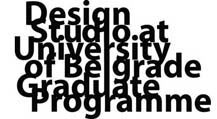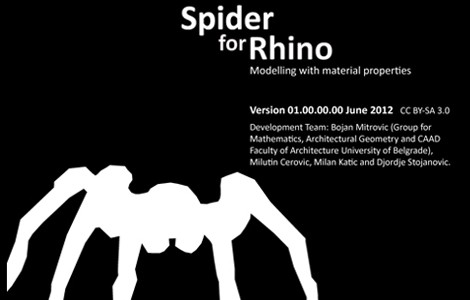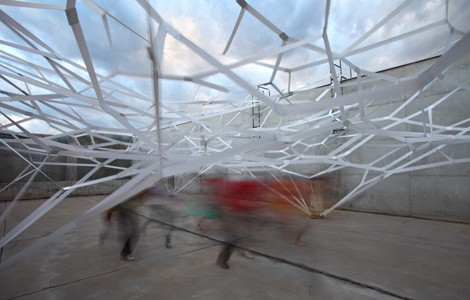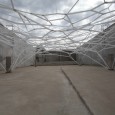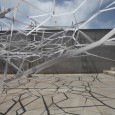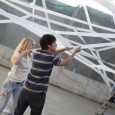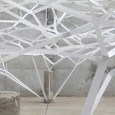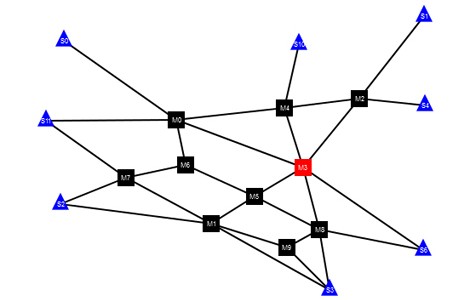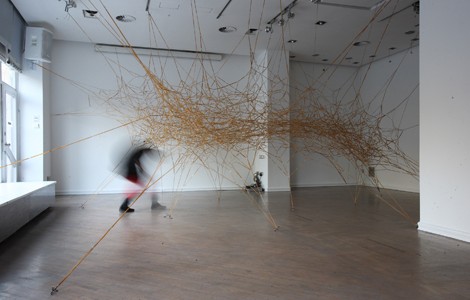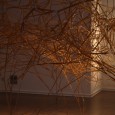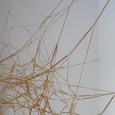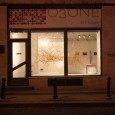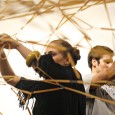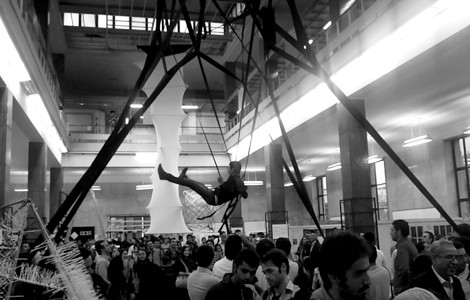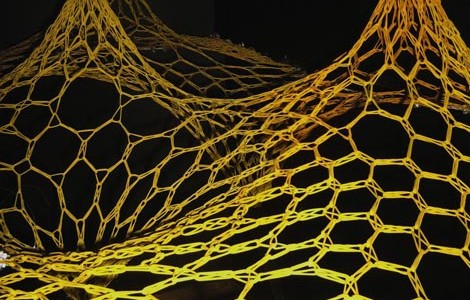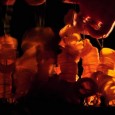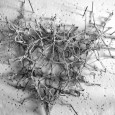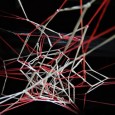Now available at http://www.food4rhino.com/project/spider4rhino
The Spider for Rhino is a plug-in created for the purpose of the specific and research oriented project. Originally it was used for the modelling of large web-like elastomer assemblies. It is conceived as a design tool and a tiny contribution to the fast growing field of architectural research aiming at better enacting of material behavior within geometric modelling. The plug-in focuses on elasticity and allows for a simple simulation of approximate material […]
Posts Tagged ‘Elastomer Assembly’
This is by far the largest prototypical model built in the Inconsistencies series. It was built at Kula Nebojsa in Belgrade in June this year, as a result of the workshop conceived as an integral part of the Design Studio curriculum 1112M5 for 16 students at University of Belgrade. There are several key aspects to this exercise. The model was built in the open air space, to interact with weather conditions over the period of few weeks. Elastic material behavior was a key to construction process. A custom made plug-in was […]
created by Bojan Mitorovic, built using Processing, based on http://www.openprocessing.org/sketch/10349
Manual:
left click │to select point
right click │to add static point
right click first point + right click second point │to add connection between two points
right click first point + right click second point │to add new mobile point between two points
right click first point + right click │to add connected static point
del │to delete point
Test it:
http://blog.4ofseven.com/uncategorized/5651/
Inconsistencies v0.3
Over the period of the last twelve months, 4of7 architects have conducted several workshops to explore structural capabilities of ‘inconsistent’ building materials. All experiments are based on widely accessible resources, often used in everyday life, and easy to do techniques. In the third and most recent phase of the project, 12 kg of yellow rubber bands were employed as construction components of a complex spatial structure. In general, rubber based materials are exploited for their ability to flex and change according to the specific external influence and then return to the pre-deformed condition. In our case, initial […]
Back from Tehran and two week workshop, part of the Architectural Association’s Visiting Programme. Titled ‘Inconsistencies’, Unit agenda was set to investigate material transformations. In the week one, students were introduced to the consistency of rule based design techniques. Suggested working method was based on generally accessible materials and easy-to-do analog design techniques. Well known ‘rubber bands’, used for various practical reasons, became construction components for complex spatial structures. In the week two, students were lead to explore structural inconsistency of rubber based materials known for their ability to flex and change according […]
Goomitze or rubber band workshop combines a design method based on the consistent use of the single component to be multiplied according to some geometric protocol, and the inconsistent material behaviour or systems inherent capacity to flex and change according to some external influence. The exercise aims to initiate thinking about adaptable spatial configurations and introduce appropriate working techniques to be utilised throughout the semester.
Rubber band is produced in vast quantities and used for various practical reasons. It is known for its elasticity or the capacity to withstand transformation and return to the pre-deformed condition. In general rubber […]
